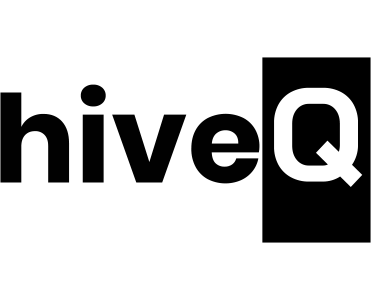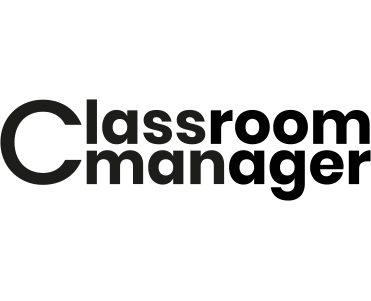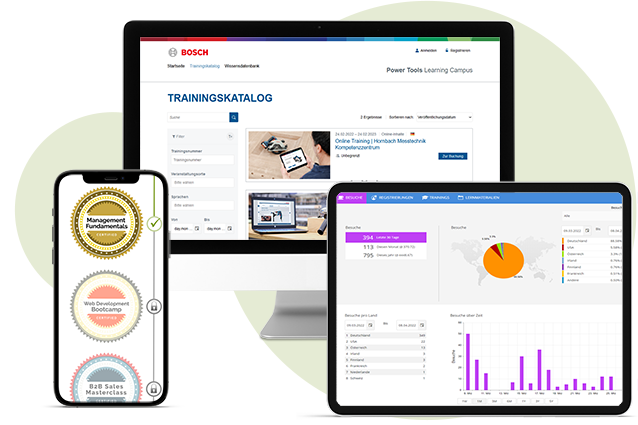Have you decided on an LMS and are about to implement it in your company?
Then read this blog! Let’s look at the eight steps to implement a LMS successfully.
Why choosing an LMS is the right decision
Suppose you have opted for a Learning Management System (LMS). In that case, you are on the right track: focusing on the continuous employee education and training of your tributes to your company’s success.
An LMS is a central platform for administering, implementing and evaluating training courses. The market-leading LMSs automatically take over a large part of the administration and allow you to focus on the desired learning content.
A comprehensive concept for implementing an LMS is crucial as a core element of the training and further education strategy. The success of an LMS implementation depends on careful planning and implementation to overcome technical and human challenges.
How to successfully implement your LMS in 8 steps
Inhaltsverzechnis
1. Concept & Structure
The first step is to develop a comprehensive concept that includes the structure of the learning environment and the desired learning paths. This includes defining the goals to be achieved with the LMS and how specific courses or learning materials will support these goals.
Our experience shows that this step is the most important but is often overlooked. We therefore recommend investing a little more time here, even if the schedule is tight.
2. Stakeholder Check
In the next step, you must identify all stakeholders and define who in the project team will be responsible for implementing, testing and managing the LMS. Your project team could consist of people with the following roles: a team leader, a project manager, e-learning technology specialists, training administrators or IT architects.
We recommend that you involve colleagues in the test phase who will later act as administrators and users on the platform. This will help you to increase acceptance: the earlier you include users and admins, the better the platform will be accepted.
3. Detailed Planning
Once the project team has been put together, a detailed plan is drawn up containing a list of tasks that need to be completed before the actual implementation. This includes defining communication channels, change management, end-user support and creating a realistic timeframe for implementation.
4. Technical Planning
Technical planning requires careful consideration of various aspects to ensure seamless integration and functionality.
First of all, the configuration and setup of the LMS is crucial. This involves determining the structure of the system and the specific functions it will provide. These decisions must align with your organization’s learning objectives and create a flexible, user-friendly learning environment.
Another important aspect is data import. Many organizations face the challenge of transferring existing data from an old LMS to a new system. This requires careful migration strategy planning to ensure that user data, learning materials and progress reports are transferred correctly and efficiently. We recommend migrating as little data as possible, as the more data you migrate, the more resources you will need. Developing a clear plan for data import minimizes disruption and ensures the integrity of your data during the transition.
Finally, the new LMS must be seamlessly integrated into the company’s existing IT infrastructure. Effective IT integration enables smooth data exchange via standardized interfaces, improves workflow efficiency and supports a holistic view of learning processes and employee development.
Taking these technical aspects into account ensures that the LMS is not only technologically up to date but is also optimally integrated into your company’s business processes and IT landscape.
5. Enabling
In this step, administrators are trained to manage the LMS effectively. This includes setting up courses, maintaining learning materials, and managing users. A train-the-trainer concept can be helpful for larger companies to ensure broad support within the company.
Find suitable change champions in your company who will support you in enabling and driving the upcoming changes forward with you. Change champions can be the team’s first point of contact regarding questions or advice during the implementation process.
6. Testing & Evaluation
Before the official launch, thoroughly testing and evaluating the LMS is crucial. Run through your most important use cases in test mode with your target group and evaluate optimization options based on feedback from test users.
7. Proof of Concept & Rollout
The rollout should occur step by step, starting with a proof of concept for an initial target group or department. Based on the success of this showcase project, the use of the LMS can then be gradually extended to other departments or locations. In most cases, the different target groups require individual configurations and adaptations.
8. Betrieb
After successful implementation, the ongoing operation phase begins. This includes maintaining the system, updating learning materials and ensuring that the LMS is used effectively in the long term. This requires continuous resources and a transparent allocation of responsibilities within your company.

How to implement a Learning Management System (eBook)
Possible challenges and how to overcome them
Despite careful planning, the practical implementation of a learning management system can present numerous challenges.
These range from providing sufficient learning content, securing the necessary resources, and ensuring the entire company’s support.
In any case, ensure the desired content is available on the platform when it goes live!
Effective change management is crucial to overcoming these challenges and ensuring a high acceptance and use of the LMS.
Key strategies include early involvement and communication with all stakeholders to promote acceptance of the LMS and reduce resistance. Creating a detailed communication plan with regular updates, training, and feedback opportunities can give your employees the confidence they need to transition.
Another critical aspect is implementing comprehensive training and support programs to give employees the practical skills and confidence to use the new system effectively.
In addition, it is essential to make the implementation process flexible to gather feedback and make adjustments to meet users’ needs. Based on these findings, adjustments are made to improve the learning platform and the learning content. The goal is to increase usability, maximize learning success, and integrate the LMS into your company’s ongoing educational processes.
With the establishment of such a comprehensive change management program, the introduction of an LMS can not only run smoothly from a technical perspective and create significant added value for learning and development in your company.
Your way to success
By following these steps, you can take full advantage of digital education with the help of an LMS and create a learning culture that promotes innovation and ensures long-term business success.
To save time and money, it makes sense to coordinate the planning with an expert. Do not hesitate to contact us via our contact form for a personal consultation.












